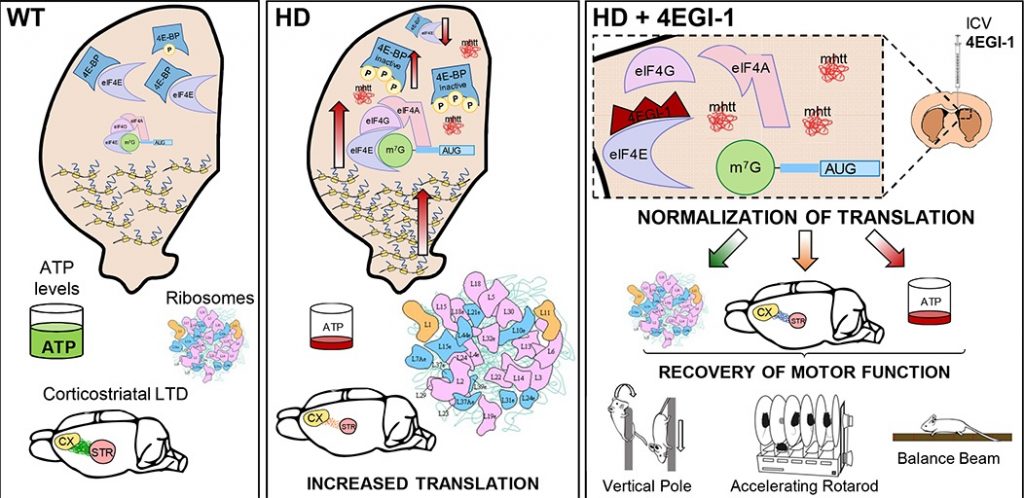Researchers identify increased translation as a novel pathogenic mechanism in Huntington’s disease

Scientists from the Institute of Neurosciences UB and Institut d’Investigacions Biomèdiques August Pi i Sunyer (IDIBAPS), have shown that protein translation is increased in the striatum of Huntington’s disease.
Results revealed specific upregulated levels of proteins from ribosomal and oxidative phosphorylation pathways that contribute to mutant huntingtin-induced striatal neuron dysfunction. .Importantly, this aberrant protein synthesis plays a role in motor phenotype associated with Huntington’s disease and therefore, modulation of translation emerges as promising a therapeutic target.
For further information go to:
To read the scientific commentary referred to this article go to:
Brouillet, E., & Merienne, K. (2019). What is gained or ‘lost in translation’ in Huntington’s disease. Brain, 142(10), 2900-2902. doi: 10.1093/brain/awz



No Comments